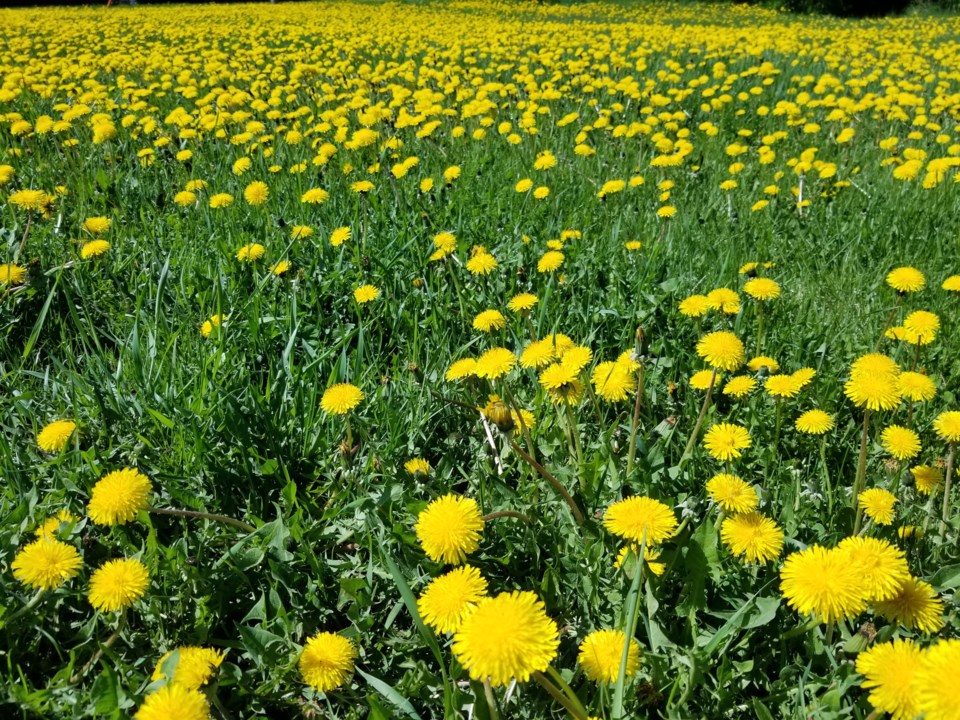St. Albert councillors advanced proposed changes to the city’s Community Standards bylaw focused on lawns, weeds and the people who grow them through first and second reading at their regular meeting Dec. 3, with one significant change.
Council voted 4-3 in support of an amendment sponsored by Coun. Natalie Joly to remove dandelions from a list of weeds that must be controlled. Couns. Mike Killick, Shelley Biermanski and Ken MacKay were opposed.
“This is not what I want municipal enforcement to be spending time on,” Joly said. “This new definition is really bizarre to me. A couple of these plants, chickweed and dandelion, are featured in every wild food book I own.”
The proposed changes will appear again on the Dec. 17 council agenda for third reading, the final step before Mayor Cathy Heron signs it into law.
The discussion made the mayor “kind of sad."
“I honestly thought this council was more forward-thinking,” she said. “I think this goes back to a lack of education in the community and a 1950s view of what your lawn should look like.”
She said other cities in Alberta either don’t address dandelions or, like Edmonton, make statements in support of them.
“The city embraces our natural environment,” an Edmonton webpage reads. “Dandelions are a part of our natural backdrop and are an early food source for wildlife and pollinators.”
The mayor said the only two emails council received on the subject before the meeting supported Joly’s defence of dandelions.
“None were opposed.”
Killick found opposition on a social media post. Taking it with a grain of salt, he said a one-day poll attracted about 200 comments, three-quarters of them opposed to dandelions as a replacement for lawns.
He said dandelions should be grown in a controlled garden environment if people want to eat them.
“They are common nuisance weeds; we should just leave that definition of dandelion in there.”
Joly took issue with that.
“Coun. Killick, you just did a really good job of demonstrating just how much misinformation is out there,” on social media and other places, she said. “I would like to see us kind of be leaders in terms of encouraging folks to become more educated, and why I would like to see this particular word struck from the bylaw.”
Clover case law
The updated bylaw would regulate clover, allowing it only to be planted in containers and not grow taller than 15 cm.
Weeds are policed by interpretation. Aaron Giesbrecht, manager of policing services, including municipal enforcement, said when peace officers encounter a plant they’re not familiar with, they refer to established definitions such as those published by the Alberta Native Plant Council to decide whether to write a ticket.
The courts, likewise, look to such sources in cases where the offending plant isn’t defined in legislation.
“The ultimate determination would end up on a particular court, which would agree or disagree, which would form case law,” Giesbrecht said.
He said prohibiting clover outright would prove troublesome because they propagate through airborne seeds. If a complaint came in from a resident, an MES officer would be unable to prove where the offending plants originated from.
So, “if an unenforceable provision in the bylaw was added, it just may lead to unrealistic expectations and dissatisfaction from residents when officers don’t take action,” Giesbrecht said. That led to administration recommending clover be permitted on front lawn areas but only in contained planters.
Biermanski said she appreciates the good clover can do, but it is not native to Alberta. She raised concerns about allergen and irritant levels and the possibility of too many bees being around children who are allergic.
She said residents took to growing clover longer this summer after the announcement the bylaw would be changed.
“It was everywhere,” she said. “This whole process essentially started because of neighbours complaining about other neighbours who were letting clover grow too long. So, it’ll be interesting to see if people start planting it at front lawns, how (many) more contentious situations happen in the community.”
Giesbrecht said the city received more than 140 lawn status complaints from May to October of this year, up from 82 in the same period in 2023.
“Unmaintained nuisance weeds such as dandelion (are) believed to be one of the leading factors that cause residents to complain about unkempt properties.”




